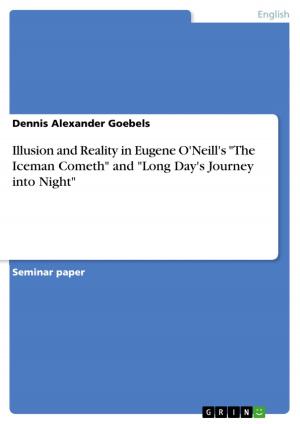Villain or hero? - Shakespeare's image of Richard III
Fiction & Literature, Literary Theory & Criticism, British| Author: | Anonymous | ISBN: | 9783656282044 |
| Publisher: | GRIN Publishing | Publication: | October 2, 2012 |
| Imprint: | GRIN Publishing | Language: | English |
| Author: | Anonymous |
| ISBN: | 9783656282044 |
| Publisher: | GRIN Publishing |
| Publication: | October 2, 2012 |
| Imprint: | GRIN Publishing |
| Language: | English |
Seminar paper from the year 2008 in the subject English - Literature, Works, grade: 2,0, University of Heidelberg (Anglistisches Seminar), language: English, abstract: In contemporary books about the English history, the entry about Richard III reads approximately as follows: According to popular belief the most villainous King in English history was a hunchback who plotted all his life to become King. This relentless pursuit of the crown was done at any cost, even it seems down to the murder of the royal princes, the sons of Edward IV [...]. When reading on, most of the works revise their opinion and admit that actually Richard was not any more blood thirsty or brutal than other contemporary monarchs, that the 'popular belief' that he killed his Nephews in the Tower, and that he was malformed, was actually not a fact, but an assumption, which has not been proven up to this day. Although most of the time the reliable sources revise their opinion about this monarch a few paragraphs later, the first impression on the history-interested person is made. The question here is what creates or created this image of the villainous and deformed Richard III? Some history books mention William Shakespeare's history The Tragedy of King Richard III as one of the possible works that have been influencing the people's opinions about this English king. This essay is intended to analyze in what way Shakespeare's work undermines this thesis and what picture he really drew of the monarch Richard III. In order to understand this complex matter, the essay will guide through the historical background of the drama and will try to analyze the notion of Shakespeare's portrayal. Furthermore, as the character of Richard appears in earlier plays already, the beginnings of the character will be presented in order to highlight the complexity of the character's development. In addition, two characterizing scenes will be examined, so that the different views on Richard's complexion can be observed. The last part consists of a short analysis of Richard's counterpart Richmond, which emphasizes the impact that Richard's complexion has on the audience.
Seminar paper from the year 2008 in the subject English - Literature, Works, grade: 2,0, University of Heidelberg (Anglistisches Seminar), language: English, abstract: In contemporary books about the English history, the entry about Richard III reads approximately as follows: According to popular belief the most villainous King in English history was a hunchback who plotted all his life to become King. This relentless pursuit of the crown was done at any cost, even it seems down to the murder of the royal princes, the sons of Edward IV [...]. When reading on, most of the works revise their opinion and admit that actually Richard was not any more blood thirsty or brutal than other contemporary monarchs, that the 'popular belief' that he killed his Nephews in the Tower, and that he was malformed, was actually not a fact, but an assumption, which has not been proven up to this day. Although most of the time the reliable sources revise their opinion about this monarch a few paragraphs later, the first impression on the history-interested person is made. The question here is what creates or created this image of the villainous and deformed Richard III? Some history books mention William Shakespeare's history The Tragedy of King Richard III as one of the possible works that have been influencing the people's opinions about this English king. This essay is intended to analyze in what way Shakespeare's work undermines this thesis and what picture he really drew of the monarch Richard III. In order to understand this complex matter, the essay will guide through the historical background of the drama and will try to analyze the notion of Shakespeare's portrayal. Furthermore, as the character of Richard appears in earlier plays already, the beginnings of the character will be presented in order to highlight the complexity of the character's development. In addition, two characterizing scenes will be examined, so that the different views on Richard's complexion can be observed. The last part consists of a short analysis of Richard's counterpart Richmond, which emphasizes the impact that Richard's complexion has on the audience.















